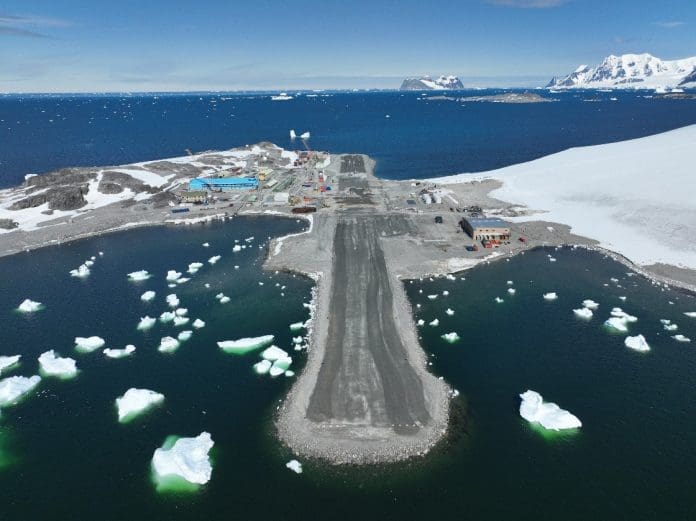The runway at Rothera research station has been resurfaced by BAM, improving access at one of the major international hubs for Antarctic research
As part of the British Antarctic Survey’s Antarctic Infrastructure Modernisation Programme (AIMP), the runway at Rothera research station has been successfully resurfaced by construction company BAM, and Ramboll completed the design.
Originally constructed in 1990, the runway is the important infrastructure that enables the delivery of science in the deep field of Antarctica.
The new Antarctic runway offers improved safety features
The newly resurfaced runway and new runway lighting delivers improved safety features for aircraft using the infrastructure with the project being completed over the course of two Antarctic seasons.
This is as a result of collaborative planning between the AIMP partnership and BAS’ Operations teams to manage the associated impact and enable its successful delivery within the planned timescales.
In support of effective ongoing operations and maintenance at Rothera, measures were introduced to improve drainage performance along the runway. A turning circle has been created at the South end to improve overall efficiency.
Graham Hopper, project director, BAM, said: “The benefits of the project have a wider impact than operations; safety has been enhanced on the runway for precision landing approaches. The energy efficient end lighting will clearly define the runway location in relation to sea ice, which will increase assistance to pilots.
“We have also built in additional ducting capacity beneath the runway for future infrastructure requirements where a runway crossing may be required such as for the Rothera Renewable Energy Project, part of our strategy towards net zero carbon.”
Pilotless planes will contribute to reduced carbon emissions
In keeping with BAS’ longer-term net zero and sustainability aims, the runway was resurfaced using existing materials, preventing the need to import materials and their associated carbon impact.
It has since been used to facilitate trials of pilotless planes in support of scientific research and exploration, which will contribute to a future reduction in carbon emissions.
Elen Jones, AIMP Programme director, British Antarctic Survey, said: “The enhancements delivered will greatly support our strategic aim to provide and operate world-leading research infrastructure enabling scientists from the UK, and colleagues from other nations, to work safely and effectively in the polar regions.”
AIMP is delivered in partnership with BAM, Ramboll and Sweco
The Antarctic Infrastructure Modernisation Programme (AIMP) is a long-term programme to support the UK’s polar research capabilities.
Commissioned by the Natural Environment Research Council (NERC) and part of UK Research and Innovation (UKRI), AIMP will enable the UK to continue to deliver cutting-edge climate, biodiversity and ocean research and innovation in Antarctica.




![[VIDEO] HS2 completes 4,600-tonne viaduct slide across M6 The HS2 team completed a 17-hour long operation sliding the viaduct structure across the M6 without closing the motorway](https://www.pbctoday.co.uk/news/wp-content/uploads/2025/12/M6-South-viaduct-slide-taking-place-across-a-live-motorway-December-2025-218x150.jpg)





![[VIDEO] Heathrow’s third runway plan wins out over Arora London, United Kingdom – May 31, 2023: A commercial airliner taking off at London's Heathrow Airport, representing plans for a third runway](https://www.pbctoday.co.uk/news/wp-content/uploads/2025/11/iStock-2143084103-218x150.jpg)




